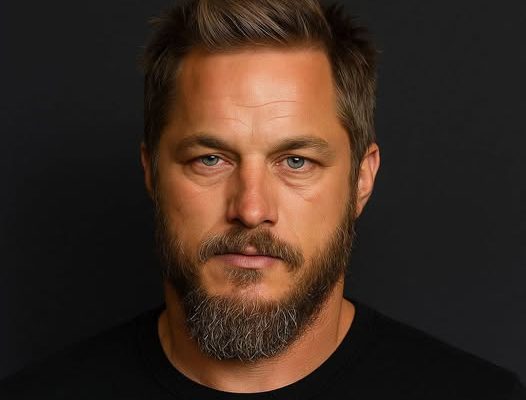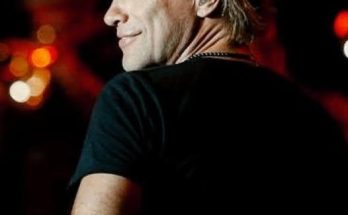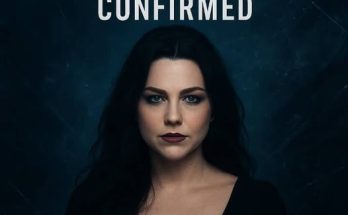Vikings 2 (2026) — The Final Saga Unleashes the Fate of Ragnar’s Legacy is one of the most anticipated continuations in the world of television, a conclusion that fans have been waiting for ever since the original “Vikings” left its mark as one of the greatest historical dramas of modern times. When the original series first premiered, it took audiences into the rough, raw, and unpredictable world of Norse warriors, kings, and families who lived by a code of honor, conquest, and survival. At the heart of that story was Ragnar Lothbrok, a man who began as a farmer with visions of greatness and grew into a legendary figure whose name was spoken far beyond his village, whose ambition carried his people across seas, and whose legacy has shaped every single character who came after him. The announcement of “Vikings 2” with its title as The Final Saga carries weight not only as a sequel but as a definitive resolution to questions that have lingered in the minds of fans for years. It promises to tie together loose ends, confront the destinies of the children of Ragnar, and determine whether the great Viking way of life is destined to survive or fade into history.
The original “Vikings” series thrived because it offered more than bloody battles and seafaring adventures. It humanized its characters, weaving themes of faith, loyalty, betrayal, and ambition into the story of a people whose lives were shaped by the sea and by the gods they revered. Ragnar was the central figure, but it was his relationships with others that gave depth to the story. His bond with Lagertha, his rivalry and eventual bond with Rollo, his strained yet deeply loving relationship with his children, and his fascination with the Saxons and the clash of cultures gave the show its unique identity. By the time Ragnar met his fate, being thrown into a pit of snakes in one of television’s most unforgettable scenes, the seeds of his legacy had already been sown. His sons carried his ambitions forward in different ways—Bjorn Ironside seeking to rule, Ivar the Boneless striving for power, Ubbe searching for new lands, and Hvitserk struggling with his own demons. Each represented a different side of Ragnar’s spirit, and their stories after his death kept audiences hooked until the series’ end. But while “Vikings: Valhalla” extended the universe with new generations and historical context, fans longed for a more direct continuation that focused squarely on Ragnar’s bloodline. “Vikings 2 (2026) — The Final Saga” is being positioned as exactly that, an epic finale that centers on the unresolved threads of Ragnar’s story through his descendants.
What makes this project even more intriguing is the timing. By 2026, the Viking genre has already established itself across film and television, with shows like “The Last Kingdom” and even fantasy-driven epics like “Game of Thrones” leaving their mark. To stand out, “Vikings 2” must deliver not just familiar visuals of longships, raids, and mead halls, but the emotional depth and narrative intensity that made the original series so groundbreaking. From early reports and teasers, the series will revisit characters from the original, bringing closure to their journeys. The fate of Bjorn, who became a legendary king in his own right, and Ivar, whose cunning and ruthlessness made him both feared and hated, will play a central role in determining whether Ragnar’s name endures or is swallowed by the tide of history. There is also speculation that Ubbe’s journey to new lands, hinted to be North America, will be expanded upon, showing the reach of Viking influence far beyond the shores of Europe. This aspect connects beautifully with the real historical legacy of Norse explorers like Leif Erikson and gives the final saga a sense of scope that matches the grandeur of Ragnar’s ambitions.
Another element of anticipation comes from the way the show might handle mythology and spirituality. One of the strengths of the original series was how it blurred the line between the real and the divine. Characters constantly questioned whether their visions, prophecies, and encounters with gods were supernatural or simply the products of belief and circumstance. Ragnar himself was haunted by visions of Odin and often felt torn between his devotion to the Norse pantheon and his curiosity about Christianity. His children inherited these conflicts, with some leaning fully into their faith and others struggling to reconcile it with the changing world around them. In “Vikings 2,” fans expect to see these questions brought to their ultimate conclusion. Will the gods stand with Ragnar’s bloodline in their final battles, or will the spread of Christianity, which loomed ever larger during the original series, prove unstoppable? This is not just a narrative question but a historical one, as the Viking Age itself marked the transitional period between pagan beliefs and the Christianization of Scandinavia. A final saga that fails to address this shift would feel incomplete, so audiences are eager to see how the show balances the clash of religions with the clash of kings.
At the core of all of this is Ragnar’s legacy, a theme so powerful that it echoes in every storyline connected to the series. His rise from obscurity to power was not just the story of one man but the embodiment of the Viking spirit of exploration, rebellion, and destiny. His legacy is measured not only in the lands conquered and battles won but in the influence he left on those who followed him. His children, lovers, friends, and enemies all defined themselves in relation to Ragnar, either striving to live up to him, outdo him, or rebel against his memory. For a final saga to fully resolve the story, it must grapple with the meaning of that legacy. Was Ragnar’s life a triumph or a tragedy? Did his ambition strengthen his people or doom them? These are questions that the writers seem poised to tackle head-on in “Vikings 2.”
The final saga is also expected to delve into the internal conflicts of Ragnar’s bloodline. While they all shared the same father, his sons had very different mothers and upbringings, which often placed them at odds with one another. The rivalry between Ivar and Bjorn, in particular, was one of the most compelling dynamics of the original series, embodying the clash between brute strength and tactical genius. But beyond rivalry, there was also love and respect, twisted by ambition and pride. Exploring how these dynamics play out in the twilight of their lives could give “Vikings 2” the emotional weight it needs to resonate as a true conclusion. Fans want to see not just battles but reconciliation, forgiveness, or even the tragic inability to achieve them. The Norse sagas themselves were filled with such contradictions, where family bonds could be both sacred and destructive, and it seems fitting that the show would honor that tradition.
Visually and stylistically, the final saga is expected to push boundaries. The original “Vikings” set a standard for gritty realism mixed with poetic visuals, from sweeping shots of fjords to the chaotic brutality of shield walls. “Vikings 2” has the opportunity to build on that legacy with modern filmmaking technology, offering more immersive battle sequences, richer landscapes, and perhaps even more ambitious depictions of mythological visions. Audiences have grown accustomed to cinematic television, so the pressure is on to deliver something that feels both grounded in history and epic in scale. At the same time, it must avoid losing the intimacy that made the characters relatable. The challenge lies in balancing spectacle with storytelling, ensuring that the fate of Ragnar’s legacy is told with the same care that defined his rise and fall.
The cultural impact of “Vikings” cannot be understated. Beyond being a successful show, it reignited global interest in Viking history and mythology, inspiring books, games, and academic discussions. With “Vikings 2” being marketed as the final saga, there is an awareness that this may be the last chance to bring this world to life in such a grand way. That means expectations are sky-high, and fans will judge the series not just as entertainment but as a final word on a cultural phenomenon that has spanned more than a decade. The responsibility is enormous, but so too is the opportunity. If done well, the show could cement Ragnar’s story as one of the defining epics of modern television, joining the ranks of shows that are remembered long after they end.
What ultimately makes “Vikings 2 (2026) — The Final Saga Unleashes the Fate of Ragnar’s Legacy” so exciting is that it promises closure. Television often leaves stories open-ended, but this saga is being framed as a definitive ending, a conclusion that respects the audience’s investment and answers the questions that have lingered since Ragnar first looked to the horizon and dreamed of sailing west. Closure is rare, and for a story as sprawling and impactful as this one, it is invaluable. Fans will finally see whether Ragnar’s vision of a world without limits was realized through his children or whether his dreams were destined to die with him. They will see whether the Viking way endures or whether it becomes a relic, remembered only in stories and sagas. And they will see, above all, whether Ragnar’s name still carries the power it once did, echoing across seas and centuries as a man who changed everything.



